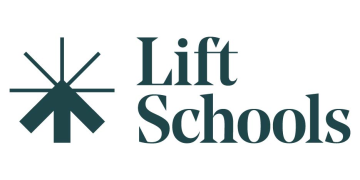What if there was a straightforward way schools could improve inclusion of the poorest pupils in their catchment, support local parents and their communities – and was completely free to enact?
There is: changing schools’ admissions criteria.
Our research shows that pupils who are eligible for free school meals (FSM) are less likely to attend a top-performing secondary than their more affluent peers – even if there is one in their neighbourhood. We’ve known this since 2016, and there are some indications that the situation has actually worsened since.
This means children who would most benefit from excellent schooling are not able to access the best state schools in their area. Rather than providing them with the tools and opportunities they need to become socially mobile, the current admissions system reinforces the status quo.
In fact, Sutton Trust research has shown a correlation between the level of social segregation in a local authority and its disadvantage gap. This is driven by under-performance of disadvantaged children rather than over-performance of their more advantaged peers.
The case for change
The key to unlocking the potential of disadvantaged young people therefore lies in providing them with fair access to the best schools. And everyone benefits from the richer social experience of attending a school that reflects its community.
Parents agree. Seventy-eight per cent told us they believe schools should have a fairer mix of pupils from different backgrounds.
Yet even if parents could find a way to secure a more expensive house within the catchment of a top school, it’s clear this wouldn’t be enough. Top schools take 30 per cent fewer FSM-eligible pupils than live in their catchment areas.
Meanwhile, parents are making school choices with incomplete information. Schools don’t always promote the support they offer to FSM-eligible children. The information isn’t always in an easily accessible format, admissions criteria can be overly complicated.
Other costs like transport, uniform and trips can also act as barriers to accessing the top-performing schools for low-incomes families.
The good news is that there are relatively simple ways to make admissions processes fairer for children from all socio-economic backgrounds.
Ninety per cent of secondaries are their own admissions authorities, and many have used this power to develop fair admissions policies. As a result, these schools have improved the diversity of socio-economic backgrounds among their incoming Year 7 cohorts.
Leading the way
One bold local authority taking big strides forward in this field is Brighton and Hove. Last year, they introduced priority places for FSM-eligible children. Now, they are consulting on the introduction of random ballots for 20 per cent of school places for children outside of catchment.
Its proposals also include increasing the percentage of places reserved for FSM-eligible children in over-subscribed schools from 25 to 30 per cent. This follows a successful grassroots campaign led by Class Divide, and it’s a perfect example of community stakeholders coming together to improve fairness for local children.
The action Brighton and Hove is taking represents an incredible step towards educational equality and social mobility. With more local authority control over admissions, as government have said they will deliver, this could be a major lever in making admissions fairer.
For leaders who want to join the growing community dedicated to making their schools more inclusive, the Sutton Trust provides free support through our Fair School Admissions Pledge and awards programme.
Since the launch of pledge in March, we’ve worked with over 60 schools, and more than 80 have been formally awarded recognition for their fair approach to admissions. We continue to look for forward-thinking, values-driven leaders to join the Pledge and make change in their school.
Getting started
For those who want to make a start, here are some key considerations.
First, school leaders (including governors) should implement a fair access review. This involves reviewing Year 7 intakes each year to check whether they reflect the local and national levels of socio-economic disadvantage.
If action is needed, schools can review how their admissions processes and policies could be adapted to address any inequalities.
One key measure to create a more socially balanced intake is to implement intentional mechanisms, all of which are already permissible by the School Admissions Code. These include the introduction of a priority category for pupil premium students in over-subscription priority criteria, using full or partial random ballots or carefully implementing fair banding (ideally across a local area)
Leaders should also ensure they remove potential financial barriers to joining their school. Fifty-six per cent of working-class parents say ‘hidden costs’ affect where they send their children. Schools should look to reduce to burden of such costs (uniform, equipment, trips, etc.).
Finally, there should be closer collaboration between secondary and primary schools to ensure parents are well informed before making school choices, especially regarding their rights to free school transport.
Ultimately, we all want all schools to be great. Increasing the social mix across schools and reducing segregation is an important step in that direction.
For leaders burdened by the unprecedented financial squeeze on their resources, making admissions fairer is a cost-effective, long-term change they have the power to make.
It will take some time to see the impact on the attainment gap, but so would any other intervention. And this is one we can start on today.












Your thoughts